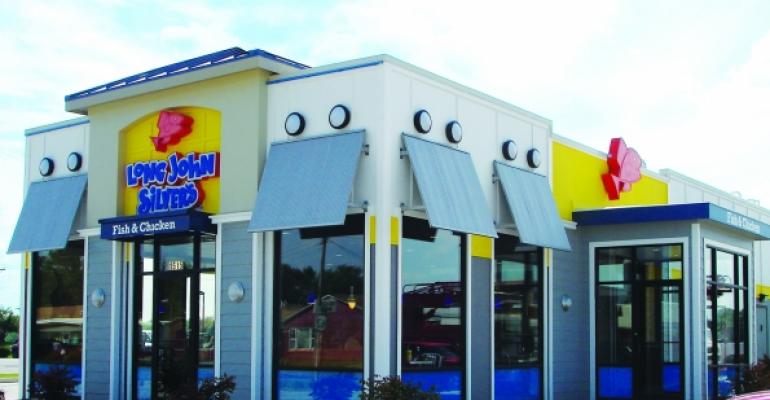Long John Silver’s, A&W All-American Food and Arby’s were put up for sale last month, stoking speculation about potential buyers, the state of restaurant industry mergers and acquisitions, and the future of these chains.
Louisville, Ky.-based Yum! Brands Inc. said it is looking to divest Long John Silver’s and A&W to focus on its core brands of Pizza Hut, Taco Bell and KFC, which, according to Yum, hold more potential for international expansion. Similarly, Atlanta-based Wendy’s/Arby’s Group Inc. said a potential sale of Arby’s would allow the company to concentrate solely on growing Wendy’s, both through market share gains in the United States and growth abroad.
This early 2011 deal news continues the string of last year’s large transactions, including the purchases of giants Burger King and CKE Restaurants as well as smaller deals for Rubio’s Restaurants and Papa Murphy’s — all of which were acquired by private-equity firms.
M&A activity in 2010 was at its strongest level since 2007, according to a January report from investment bank Cowen & Co., and the firm expects deal-making to continue to rebound in 2011, even while credit providers remain selective.
“The acquisition market for foodservice concepts is a highly mixed bag,” said Glenn Kaufman, managing director at D Cubed Group LLC, a private-equity firm active in the restaurant space. “When you go into 2011, the financing markets are generally good, but still far more discriminating.”
Kaufman, a veteran private-equity player who spent more than 10 years at American Securities Capital, said the pending sell-offs of secondary brands are a barometer of an improved economy.
“The likely exiting of underperforming brands is a function of larger companies taking an opportunity in a better economy to try to make some transactions happen and focus on the core,” he said.
Mike Kelly, chief executive of Brand Value Advisors in New York City, which has worked with Hooters, Sbarro and firms including North Point Advisors and MidOcean Partners, said companies are already diving into due diligence surrounding Long John Silver’s, A&W and Arby’s.
He speculated a private-equity firm — that would then tap an experienced restaurant operator — would be a likely buyer for Arby’s, while a strategic buyer or another restaurant company may be drawn to Long John Silver’s and A&W.
“Arby’s, if you get it fixed, is a pretty big business,” Kelly said. “A Thomas Lee Partners or a Sun Capital Partners could take a look at this. … My sense is whoever buys Arby’s won’t own it for long. They’ll come in, turn it around and sell in about three years.”
Focus, not cash
While both of these deals should garner the parent companies hundreds of millions of dollars, industry analysts noted that the divestitures are more about operational focus for Yum and Wendy’s/Arby’s, and less about cash.
R.W. Baird & Co. securities analyst David Tarantino viewed Yum’s decision to shed Long John Silver’s and A&W positively, though he dismissed the thought of a sale being lucrative.
“While a transaction seems likely to provide strategic benefits of focus, the proposed sale of these brands is not expected to have a material impact on earnings per share estimates,” Tarantino said.
Long John Silver’s and A&W collectively account for 1,630 franchised units and about $900 million in U.S. systemwide sales. The two chains, however, account for less than 1 percent of Yum’s operating profit.
Morgan Stanley analyst John Glass wrote that “chronic underperformer” Arby’s “was both a distraction to [Wendy’s] management and a deterrent to potential shareholders.
“While it is unclear if a sale would be accretive to earnings, … the transaction could improve margins and returns at the parent company,” Glass said.
Arby’s is a 3,700-unit chain that Glass estimated could produce earnings before interest, taxes, depreciation and amortization of about $50 million in 2010.
New expectations
Wendy’s/Arby’s and Yum both said a focus on core brands would help spur growth, both in the United States and abroad.
Wendy’s has just 340 international restaurants and said it sees room for 8,000 locations.
Yum makes no secret of its plans to dominate China and other emerging markets. Its 2011 international-growth goals, including 900 units in Yum Restaurants International and 475 locations in China, did not involve either Long John Silver’s or A&W.
At the time of Yum’s announcement, securities analyst Steve West of Stifel Nicolaus wrote that divesting Long John Silver’s and A&W also would allow Yum to focus on reviving its big three concepts in the United States. Domestic same-store sales rose 1 percent in Yum’s most recent third quarter, ended Sept. 4, comprising gains of 3 percent at Taco Bell, 8 percent at Pizza Hut and an 8-percent decline at KFC.
Wendy’s also posted improved sales trends for its latest quarter, with systemwide same-store sales up 0.2 percent.
Sarah E. Lockyer contributed to this article.
Contact Mark Brandau at [email protected].




